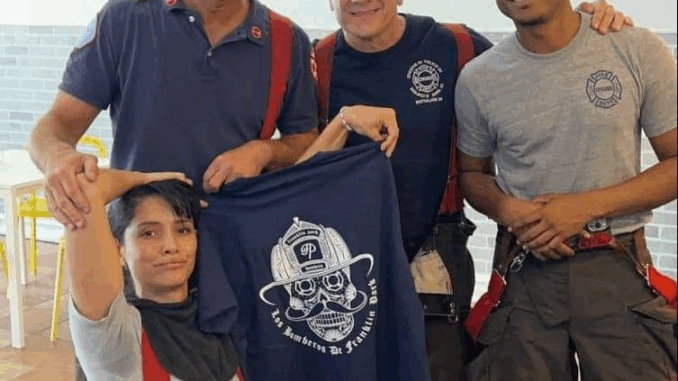
Chicago Fire has always prided itself on gritty realism. But one unforgettable moment nearly brought production to a grinding halt—not because of poor planning, but because it was too real. A fiery rooftop rescue filmed in Season 9 blurred the lines between fiction and reality so convincingly that actual emergency crews were nearly dispatched… and the fallout behind the scenes left the cast visibly shaken.
It was a nighttime shoot set in an abandoned building on the city’s South Side. The scene required intense coordination: multiple ladder trucks, a towering inferno effect, and actors rappelling from the roof as panicked background characters screamed below. To fans, it was just another day in the heroic lives of Firehouse 51. But to nearby residents, it looked terrifyingly real.
At 11:42 p.m., 911 dispatchers reportedly received seven separate calls about a possible “active fire with people trapped on the roof.” None of the callers knew a show was filming. The visual spectacle, enhanced by practical flames, smoke machines, and the distant sound of emergency sirens, convinced onlookers that this was no rehearsal.
Within minutes, real Chicago Fire Department trucks were en route.
Here’s where it gets wild: production had secured all the correct permits and had notified local authorities, but a clerical error meant one of the neighboring precincts wasn’t informed. When CFD engines roared down the block, they nearly collided with a camera crew’s crane truck.
The scene came to a screeching halt.
“The alarms started going off—not in the script, but in real life,” one crew member later shared. “There were fire chiefs yelling, actors still in harnesses, and smoke everywhere. For a minute, no one knew who was in charge.”
It took over 45 minutes to defuse the situation. Cast members, including Taylor Kinney and Kara Killmer, remained in character—at first—believing it was part of the sequence. But once the real emergency personnel started shouting orders, everyone realized something was wrong.

Producers had to produce physical permits on the spot, explain the misunderstanding, and offer an on-the-spot tour of the set to calm tensions. “They were professional, but very annoyed,” said an assistant director. “One of them said, ‘You want to pretend to be heroes? Make sure you don’t get in the way of real ones.’”
But perhaps the most dramatic twist came later.
In a closed-door meeting the following day, NBC executives reportedly considered cutting the scene altogether. The liability was too great, they feared—and public perception could have been disastrous. But director Reza Tabrizi fought hard to keep it. His argument? The chaos proved exactly how realistic the show had become.
Against all odds, the scene stayed. And when it aired, it became one of the most talked-about sequences of the season—thanks in part to rumors swirling online about the near-intervention by the real CFD.
Some fans now refer to it as the “scene too real to fake.”
For the cast and crew, it was a reminder of how high the stakes can be—even in a fictional world. And for the audience? It cemented Chicago Fire’s reputation as one of the most viscerally authentic dramas on television.
